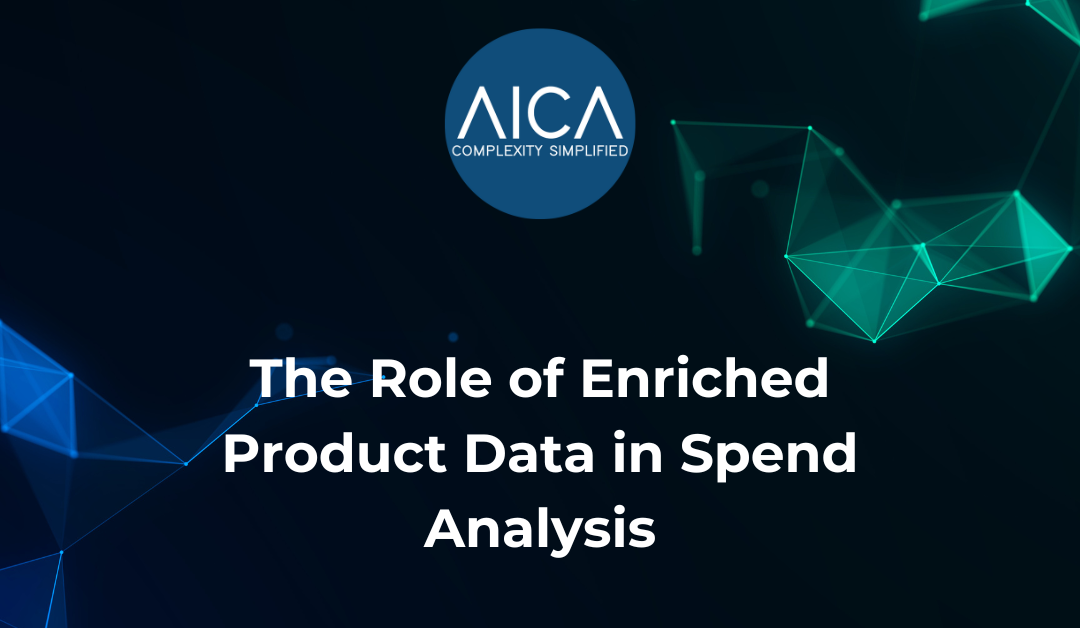Spend analysis is a critical process that organisations use to evaluate and optimise their expenditures. It involves collecting, cleansing, and analysing spend data to identify cost-saving opportunities, consolidate suppliers, and improve procurement strategies.
While clean data forms the foundation for effective spend analysis, enriched data takes it a step further by adding depth and context to the information, enabling more comprehensive insights and strategic decision-making.
This article explores the role of enriched data in enhancing spend analysis and why it is vital for organisations looking to optimise their financial operations.
What Is Enriched Product Data?
Enriched data refers to data that has been enhanced with additional attributes, descriptions, classifications, or details that provide a more complete view of the information. For instance, basic spend data might include details like item names and costs, while enriched spend data could add information such as supplier ratings, contract terms, product categories, UNSPSC classifications, and more. This extra layer of detail supports more nuanced and actionable insights.
How Enriched Data Enhances Spend Analysis
Improved Spend Visibility
Enriched data helps organisations achieve a clearer and more comprehensive view of their expenditures. With added data points like product classifications and supplier details, businesses can break down spend by categories, departments, and timeframes. This improved visibility allows for more targeted analysis and better identification of cost-saving opportunities.
Enhanced Supplier Management
When spend data is enriched with detailed supplier information such as performance ratings, delivery times, and compliance records, organisations can evaluate and compare suppliers more effectively. This helps in managing supplier relationships, negotiating better terms, and consolidating vendors to maximise cost efficiency. Enriched data enables procurement teams to identify high-performing suppliers and reduce reliance on underperforming or costly ones.
Category Management and Strategic Sourcing
Spend analysis relies heavily on accurate product categorisation to identify trends and opportunities for strategic sourcing. Enriched data that includes attributes like UNSPSC codes or custom category tags ensures that items are classified correctly. This level of categorisation helps businesses understand where they can consolidate purchases, negotiate bulk pricing, or source more cost-effective alternatives.
Accurate Spend Forecasting and Budgeting
Enriched data enhances forecasting and budgeting by providing historical context and detailed insights into spending patterns. Organisations can identify seasonal trends, predict future spending needs, and plan budgets more accurately. This level of insight allows businesses to allocate resources more effectively and prepare for potential financial risks.
Identification of Cost-Saving Opportunities
Enriched data supports deeper analysis by adding context to raw spend figures. For instance, including contract details and supplier terms allows organisations to spot discrepancies between agreed-upon pricing and actual spend. This helps procurement teams identify cost leakage and implement corrective measures to capture savings.
Better Compliance and Risk Management
Compliance with internal policies and external regulations is critical, especially for industries that face stringent procurement standards. Enriched data can include compliance-related attributes such as supplier certifications and adherence to regulatory requirements. This enables organisations to ensure that their spend practices meet necessary compliance standards, reducing risk and maintaining a strong reputation.
Key Attributes That Add Value in Spend Analysis
To unlock the full potential of spend analysis, organisations should enrich their data with the following attributes:
- Supplier Information: Ratings, contract terms, compliance history, and performance metrics.
- Product and Service Classifications: Standardised codes like UNSPSC or custom tags that help in categorisation.
- Contract Details: Agreed-upon pricing, contract expiration dates, and terms of service.
- Geographical Data: Location of suppliers and regions where spend is concentrated.
- Lifecycle Information: The frequency and timing of purchases to understand spend cycles.
Challenges in Data Enrichment for Spend Analysis
While data enrichment offers substantial benefits, it can be challenging due to the volume and complexity of data involved. Manual enrichment can be time-consuming and prone to errors. Organisations must implement automated solutions that can handle large datasets efficiently and accurately.
How AICA Supports Data Enrichment for Spend Analysis

AICA blends automation with human expertise to ensure top-tier data quality. Our AI-powered data enrichment solutions help organisations enhance their spend analysis by streamlining the addition of critical data attributes and classifications, while maintaining a high level of accuracy through manual QA/QC performed by subject matter experts.
Key Advantages of AICA’s Data Enrichment Solutions:
- Assisted Automation: Our platform automates significant portions of the data enrichment process, from identifying gaps to adding relevant supplier details and product classifications. Subject matter experts oversee the QA/QC process to ensure that enriched data is reliable and actionable.
- Enhanced Accuracy: The combined approach of automated technology and human verification allows for enriched data that is not only comprehensive but also precise.
- Seamless Integration: AICA’s platform integrates with your existing ERP, MDM, EAM and PIM systems, providing enriched data that’s readily accessible for strategic analysis.
- Actionable Insights: With enriched data, procurement teams gain deeper insights into spending, enabling smarter decision-making and improved cost efficiency.
Final Thoughts
Enriched data is a powerful tool that transforms basic spend analysis into a more insightful and actionable process. With added context and detail, organisations can optimise supplier management, enhance compliance, and uncover opportunities for cost reduction and strategic sourcing.
Ready to enrich your product data? Contact AICA today to learn how our data solutions can help your organisation achieve greater accuracy, efficiency, and cost-effectiveness in your financial operations.
Copyright Reserved © AICA Data International Ltd 2024

